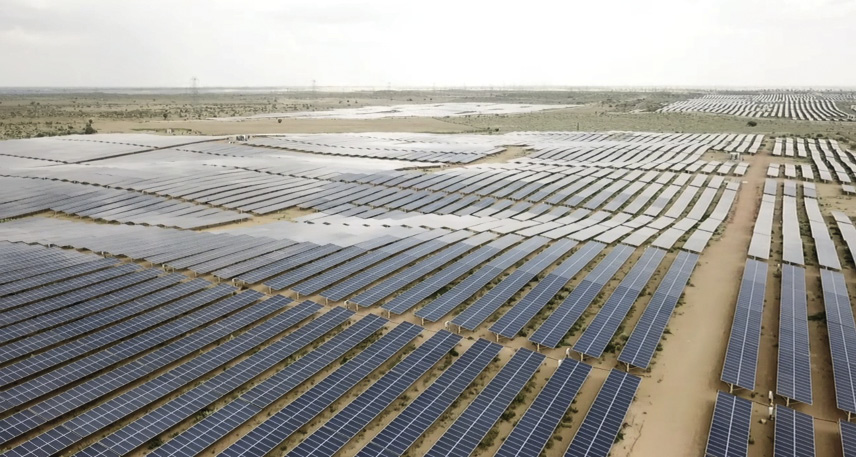Large-scale solar PV plants are often located in remote areas with particularly poor grid conditions, as they rely on sunshine and geographical space. With vulnerable grid infrastructure and limited short circuit capacity in desolate areas, solar farms tend to connect to weak grids. Coupled with long-distance transmission and high-voltage direct current, large PV plants face the additional challenge of needing to achieve favorable grid connections. When transmission is faulty, this can result in a voltage transient peak at the grid-connected spot near the fault point.
AI algorithms
Huawei has taken its software algorithms and experiences with weak grid operations in the telecommunications industry and has applied them to PV power generation. In addition to establishing mathematical models that are tailored for different grid-connection scenarios, PV plant designs, and power grid operating points, Huawei utilizes big data to train the optimal grid-connection control algorithm.
“In the event of poor power grid waveforms, this ensures a seamless and high-quality solar inverter power generation,” says Yao Chang, an energy scientist at Huawei. Chang points to the company’s latest AI Boost FusionSolar 6.0 solution, which is an AI self-learning algorithm for impedance reshaping.
The solution integrates multiple algorithms: an adaptive algorithm for dynamic damping, a self-adaptive algorithm for intelligent series compensation, and an active harmonic suppression algorithm. “The electrical characteristics of the PV plant are dynamically adjusted to the power grid via AI self-learning to ensure stable operation and a continuous connection,” says Chang, adding that the capability shifts the status of PV from a passive grid adapter to an active grid supporter.
Huawei says its AI Boost solution has made a notable difference at the site of a 50 MW solar PV plant located in a remote, desert area in Rajasthan, India, with a fairly weak grid scenario. “The voltage of the PV plant is boosted multiple times before connecting to the grid,“ says Chang. “Huawei’s AI Boost technology has helped to facilitate a smooth grid connection, whereby the quality of power generated is markedly superior compared to other PV plants in the same region.”
Supporting stability
In the past, the stability and power quality of power grids relied on thermal and water electric generator sets. However, with the increasing penetration of renewable-energy generation and the decreasing use of traditional electric generator sets, the short-circuit ratio (SCR) of power grids will gradually decrease. As such, power grids are facing challenges in terms of stability.
The short circuit ratio (SCR) is a key indicator of the grid status at the grid-connected point. A smaller value indicates a weaker grid and inevitably, a more challenging grid connection. Huawei says its new solar inverter solution is capable of controlling and supporting weak grid connection with an SCR lower limit of 1.5, and fault ride through capabilitities.
“In order to ensure that solar can be connected to power grids on a large scale, solar inverters must have a stronger SCR adaptability,” says Chang. “Renewable energy with a strong high voltage ride through (HVRT) capability is imperative to maintaining the safety and stability of power grids.” AI self-learning can proactively identify the electrical features of a PV plant and automatically adjust the grid-tied algorithm to match the power grid.
Chang points to one solar PV plant that provides power to 89 hillside villages across 12 towns in Ningxia, China. “The 26 MW project was experiencing power difficulties due to grid resonance and voltage exceptions,” he says, noting that Huawei resolved the issue by installing its FusionSolar solution. “All power grid faults were rectified – ensuring stable operations.”
This content is protected by copyright and may not be reused. If you want to cooperate with us and would like to reuse some of our content, please contact: editors@pv-magazine.com.
